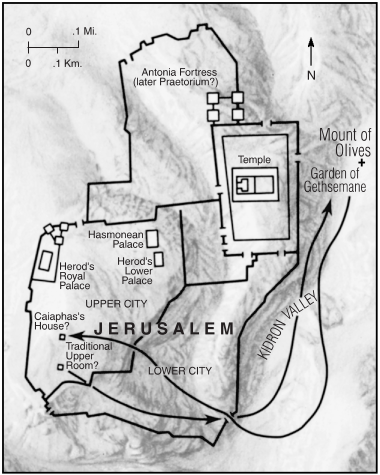
The Garden of Gethsemane
After the Last Supper, Jesus went to Gethsemane, where he was arrested and taken to Caiaphas’s house.
Open Bible Data Home About News OET Key
OET OET-RV OET-LV ULT UST BSB MSB BLB AICNT OEB WEBBE WMBB NET LSV FBV TCNT T4T LEB BBE Moff JPS Wymth ASV DRA YLT Drby RV SLT Wbstr KJB-1769 KJB-1611 Bshps Gnva Cvdl TNT Wycl SR-GNT UHB BrLXX BrTr Related Topics Parallel Interlinear Reference Dictionary Search
A B C D E F G H I J K L M N O P Q R S T U V W XY Z
GETHSEMANE
Place to which Jesus and his disciples walked after their Last Supper together in the upper room. In Gethsemane, Jesus underwent a great inner struggle, as he realized the hour of his betrayal was at hand (Mt 26:36-56; Mk 14:32-50; Lk 22:39-53).
The name Gethsemane, used only in the Gospels of Matthew (26:36) and Mark (14:32), means “oil press,” suggesting the presence of an olive grove. The use of the Greek word “place” in the Gospel accounts indicates that Gethsemane was an enclosed piece of ground. It may be that the grove was privately owned and that Jesus and his disciples had special permission to enter.
Though the Gospels of Luke and John do not mention the word Gethsemane, they both record Jesus’ agony before his betrayal. Luke says the location was on the “Mount of Olives” (Lk 22:39). John describes the area as “across the Kidron Valley” (Jn 18:1); John’s is the only Gospel to call the spot a garden. From those accounts it is also evident that Jesus and his disciples gathered in Gethsemane often for fellowship and prayer (Lk 22:39; Jn 18:2). The Gospel narratives indicate that the garden was large enough for the group to separate into different parts of it.

The Garden of Gethsemane
After the Last Supper, Jesus went to Gethsemane, where he was arrested and taken to Caiaphas’s house.